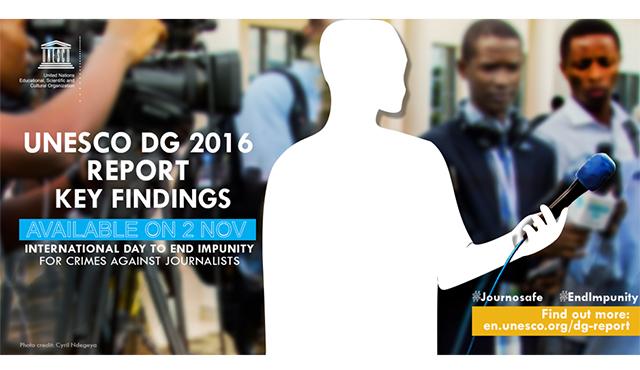UNESCO Director-General's Report on the Safety of Journalists and the Danger of Impunity
Share
21/12/2016

UNESCO has released key findings from the Director-General’s Report on the Safety of Journalists and the Danger of Impunity.
The report sheds light on the killings of journalists, acts which were condemned by the Director-General in 2014-2015, noting that 2015 was the second-deadliest year for journalists, media workers and social media producers.
UNESCO has recorded 827 killings over the past ten years. Of those deaths, 90% remain unresolved; a sign of the impunity that surrounds attacks on the press.
According to the report, the failure to prosecute the killers of journalists encourages further violence, including kidnappings, arbitrary detention, torture, intimidation and harassment, both offline and online, and seizure or destruction of material.
Impunity continues to be a widespread problem. According to information received from Member States, 63 of the 827 killings condemned by UNESCO between 2006 and 2015 have been resolved, which constitutes only 8% of all cases.
The report also sounds a note of optimism. In the latest two-year period, 40 out of 62 Member States responded to UNESCO’s requests for information about judicial follow-ups to the killings of journalists, compared to just 16 out of 59 Member States in 2014 (covering 2012-2013).
As the UN agency charged with the protection of free expression, UNESCO has been designated as one of the lead agencies to monitor Sustainable Development Goal 16 , which covers the promotion of peaceful and inclusive societies, public access to information and the protection of fundamental freedoms. This report and the earlier World Trends in Freedom of Expression and Media Development , provide an initial set indicators for tracking progress on Target 16.10. The UIS has pledged to assist UNESCO, to the extent that resources permit, in the monitoring of SDG Indicator 16.10.2: the number of countries that adopt and implement constitutional, statutory and/or policy guarantees for public access to information.